Advertisement
About the Norwegian Seafood Council

The Norwegian Seafood Council (NSC) works with the Norwegian fisheries and aquaculture industries to develop markets for Norwegian seafood through local market intelligence, market development and reputational risk management.
The NSC is headquartered in Tromsø and maintains local representatives in 12 of Norway's most important international markets. The Norwegian seafood industry finances the activities of the NSC via a tariff on all Norwegian seafood exports.
The NSC is a public company owned by the Ministry of Trade, Industry and Fisheries.
To learn more about Norway’s unique location, diverse seafood, generations of experience, and industry-leading sustainable fishing techniques, click here.
Spring and summer are, arguably, likely to see fewer Covid cases and bring with them the excitement of long days, warmer weather and a chance for your customers to meet their friends at your pub for drinks and food.
It also means a greater possibility of people staying out later and possibly spending more dwell time at your site and, if you have a garden or any outdoor space, an increase in usable covers – so throw up a prayer for good weather.
Of course, outdoor space may include the potential for barbecues to add to your food armoury while the continuation of deliveries still holds weight for many operators. Here we look at the food trends that you could use at your pub so long as you have catering facilities of some kind.
After a dire performance due to Covid in 2020, a report from insights specialist Lumina Intelligence revealed a brighter future for the UK pub and bar market, citing predicted growth of 51.8% in 2022 and an expected full market recovery by 2024. This means pub dining will be big in the recovery because it offers a unique and special environment – the combination of a relaxed and informal setting, a great drinks selection and an attractive food offering is hard to beat.
Advertisement

Cheers to Bidfood’s top 2022 trends
At Bidfood, we’ve uncovered the key eating, drinking and social trends shaping the pub industry in 2022.
‘The Wow Factor’ is a trend that dares your taste buds to try more and treat yourself to make up for the challenging past few years. Adding unique twists to favourites will appeal to a consumer’s sense of adventure, without changing too much. Everybody loves a classic crumble drenched in custard, but you can elevate this traditional dessert into a really decadent, eye-popping dish with fun extras. Gooey marshmallow, toasted meringue, chocolate chips and a salted caramel custard – goodies that will leave you mouthing, ‘wow’!
Another trend set to make an impact this year is Celebrating British. It’s what it says on the tin: appreciating British food, ingredients, and farmers. One benefit of the pandemic is that 44% of consumers want to support the British economy when eating out.[1] It gets even better, as 44% also believe that British sourced ingredients are fresher.[2]
With a four-day weekend fast approaching in celebration of the Queen’s Platinum Jubilee, it’s a great opportunity to take advantage with special courses and drinks. How does a ‘silver’, ‘gold’, ‘diamond’ and ‘platinum’ menu for each day sound? We’re thinking luxurious desserts like a chocolate bombe adorned with gold leaf, served with a dollop of Devon’s finest clotted cream on the side – a pudding fit for a king or queen!
For more information, click here.
[1] Bespoke consumer survey, Bidfood & CGA, 1,502 UK consumers, October 2021
[2] Bespoke consumer survey, Bidfood & CGA, 1,502 UK consumers, October 2021
Meanwhile, research from insights expert CGA suggests consumers’ food preferences have changed in subtle but important ways since the start of the pandemic.
CGA states, back in 2019, British cuisine was most the widely consumed, with 85% of consumers choosing it while eating out, followed by Italian (76%), Chinese (73%), Indian (69%) and American (65%).
However, in its Food Insights Report 2021, which was compiled as restrictions on hospitality and the UK in general were easing significantly, CGA found that while Italian food remained the most popular non-British cuisine, Chinese had overtaken it as the most easily available.
Burmese topped the report’s list of fastest emerging cuisines, followed by Peruvian, Filipino, Pacific Rim and Scandinavian – and with demand still growing much faster than numbers of restaurants – there are opportunities for operators to embrace them and for new concepts to fill the gap.
It added numbers of Indian, Italian, Thai, American, Chinese, Mexican and French restaurants have all dropped by more than 10% since 2019, following a wave of closures during the pandemic while vegetarian and vegan, Portuguese, Turkish and Middle Eastern restaurants have all grown in number over the past two years.
These are insights pubs can use to curate their food offers as people discover a new sense of adventure as they return to the on-trade.
Flexitarian offer
Not so much of a trend but more a way of life for gastropub, the Cadeleigh Arms, is its flexitarian bias when it comes to food.
“For the past five or six years, people have been travelling a lot of miles to us for our vegan offering that’s not necessarily vegan,” explains co-chef and co-owner Nick Hack. “It’s flexitarian healthy eating, which means people are cutting out meat but not entirely – they are just not eating meat seven days a week. That's the biggest thing for us here at the pub and we’ve always been shouting about it since day one.”
Hack says the site, which made the Top 50 Gastropubs list as announced in late January, only has about six mains on its menu that are suitable for meat eaters and pescatarian plus another four vegan choices as well as four vegan starters and four vegan desserts.
Something the Cadeleigh Arms in Tiverton, Devon, does differently to similar sites is rather than having a menu that tells guests what they are going to eat, it takes pride in being more accommodating and bending to serve customers what they want.
Hack adds: “That vegan menu seems to hit the brief for everything because most of it is gluten-free, there’s the vegan side of it, of course, and the field-to-fork thing, which we're big on.”
When it comes to suppliers, the Cadeleigh Arms uses local and small rather than mainstream, and this culture dictates the seasonal and fast changes of menu. Hack explains: “The biggest one we use is Shillingford Organics and they're tiny. That's how small we operate. They will ring us with a produce list and it's that small it can be gone within a week and then they grow something else.
“Our menus can change very quickly. We don't write a menu for a month or a week when the produce has gone, Tina [King, Nick’s wife] (both pictured below) and I sit down and develop the next menu together. Some dishes might stay on the menu for a month but you'll find a lot of the garnishes to the dishes and the vegan dishes will change quite a lot more through the season.”
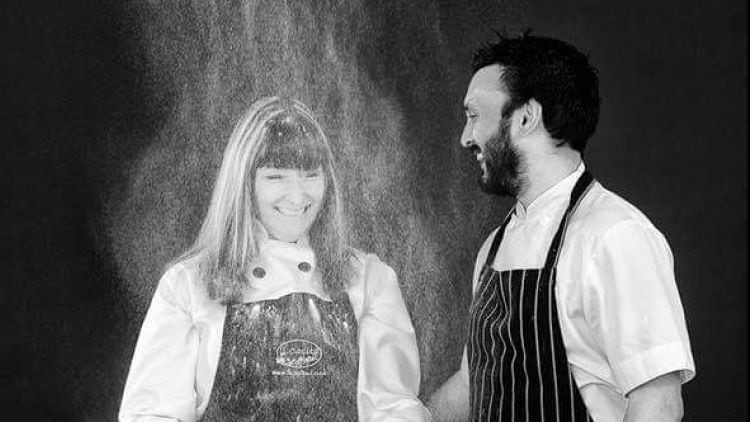
He adds neighbours will drop food off for the pub too and refuse to take payment for their efforts and goods. Further afield, mushrooms and things that can be foraged or grown are greatly accepted too.
Other produce for the menus includes beef from neighbouring beef farmers Mat and Miriam, who produce Devon Ruby cattle, with the pub employing a nose-to-tail attitude so there’s no waste. Daily contact with seafood businesses Wild Harbour Fish Company and Flying Fish Seafoods mean the best and freshest fish are sourced locally. Lambs come from seven miles away in Coppellstone while Creedy Carver supplies ducks, guinea fowl and so on.
On trends, Hack says: “We prefer to set a trend in our business rather than follow a trend – and we set our stall out a long time ago. We can't find anywhere that gives what we give and that’s why we’ve got all these people flocking to our site even though there are plenty of good gastropubs in the area that are in that Top 50. We go the extra mile with people.
“We believe in what we are doing with the veg side but it’s not saying we can’t cook a piece of halibut or a good rib eye. We can do that but it’s minimal on the menu, but people are coming here for the reason we can do everything but we are setting the kind of trend that fits in with that flexitarian vibe.”
He adds the idea of flexitarianism has surfaced more so in the past year while it was support from those wanting to eat vegan foods before who were the Cadeleigh Arms’ bulk of customers.
“People’s eating habits are changing,” Hack says. “They are coming to us and saying ‘we don’t eat a lot of meat, but we know you’ve got the offer’.
“The flexitarian thing is gathering momentum more, I’d say, than the vegan side but everyone is worried about animal welfare and their diet but they’re still happy to eat our farm-reared beef or fish that’s been line-caught out of the sea. They’re happy if they know where it’s come from, which is very evident on our menus and they’re happy to put their trust in us.”
And the upcoming trends for summer are difficult to predict yet also dictated by what is growing at the time. At the end of February, Hack had finished with game meats and was expecting wild garlic to begin in March but didn’t want to go in on them too early. He simply has to play it by ear. “It challenges both Tina and I even though we’ve been chefs for, I think 35 years and nearly 30 years between us, respectively. The vegan and flexitarian offer means we have to sit down and start thinking of new things outside the box to put the flavour into the menu. We don't tend to label everything with ‘vegan’ all over it because that can put some people off.”
When it comes to advertising, the Cadeleigh Arms’ chef-owners Hack and King create all the social media posts themselves. They confess to not being experts but “we like to write from the heart” says Hack. The pub does advertise in a local publication and he adds making it into the Top 50 Gastropubs – the site’s third listing in it in a row – will create a “spike” in business, particularly in the summer when people travel to the pub.
On this note, Hacks adds that while many places have scaled back their takeaway offer as sites have reopened, that side of the business continues to do well at its Tiverton home.
“The takeaway offer is till, technically, trending for us,” he explains. “We’ve never stopped our takeaway – all we’ve done is develop it and bolted it onto the business now. I don’t advertise it massively like we did when were in lockdown.
“We try and not make everything sloppy takeaway food. We put a little thought into it by making food fresh and interesting. Takeaway boxes are still big and I think they’ll continue. There's still a lot of people, maybe older ones, who are still not venturing out comfortably and they’re happy to receive a ‘do-it-yourself’ takeaway box.”
And on deliveries, Karl Chessell, CGA business unit director – hospitality operators and food, EMEA, says: “This strong start to 2022 shows the delivery sector is going to flourish long after Covid-19 concerns ease. Consumers have got used to the convenience and quality of at-home food and drink from restaurants and pubs, and many of them will not change their habits lightly, even as eating-out returns to pre-pandemic norms. The big challenge for businesses is to ensure that delivery sales are incremental rather than detrimental to their in-venue sales in 2022.”
Leading by example
Alan Hancock owns pubs in the Scunthorpe area and his site, the Shires, was a finalist in the Best for Families category of the 2021 Great British Pub Awards.
He explains the fact he is not dictated to by a pub company means he doesn’t have to follow any set working patterns and is able to start trends instead.
“We started doing rainbow-coloured burger buns (pictured below) and three other pubs started doing them after us so they’ve all run out in a month,” Hancock says. “We just try to think of things we can do. For example, today our special is the ‘Outback Combo’. That's a piece of kangaroo, ostrich and wild boar sausages with chips, homemade slaw and salad – that sells really well.”
Hancock adds that on a Monday evening, the Shires probably serves 80 to 90 covers but had catered for more than 600 the day before.
Another trend he is exploring at the Shires, which has a funfair in the back garden called Bouncy Land and individual dining pods for customers, is ice cream. “We do all the traditional meals such as scampi and chips and mixed grills, which are still good sellers. But when we put a new idea on, everybody (rival pubs) start selling it and then you’ve got go to the next idea,” Hancock says.
“In our foyer, we have 16 flavours of [hard scoop] ice cream and I’ve just bought a new soft scoop machine and we’re going do something with Mr Whippy ice cream and added sprinkles and so on. In my fairground, we’ve got a doughnut machine, a popcorn machine, 10 different flavours for the slushie machine, candy floss, burgers and sweets. We’ve got all sorts.”
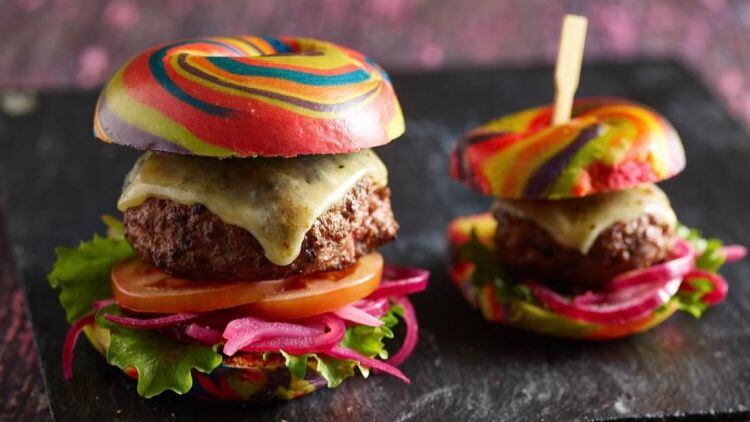
He stresses there is a lot of experimentation at the Shires in a bid to be the best in the area by keeping ahead. The Lincolnshire site has eight chefs with all trying different things that Hancock says don’t always work but allows his chefs to be creative.
For the funfair, there is a charge of £7 for two hours that allows unlimited rides and that satisfies parents with children, the love for outdoors from the public and the potential for barbecues, which Hancock puts on during most summer weekends and often includes a hog roast.
He also ensures dietary requirements are catered for that includes plenty of options for vegans and vegetarians, plus those unable to eat gluten-free food, dairy-free dishes and so on.
“This summer, we are going to push more for outside food because I’m creating a new area so we can have more barbecue offers,” Hancock explains. “We’re buying a smoker because we sell about 100kgs of ribs a week at the moment cooked in an oven but the smoker will be outside – and when the wind in the right direction anyone smelling it will want some food immediately.”
Hancock’s business, which includes another pub called the Ferry Boat Inn in West Butterwick, has about 40,000 followers on Facebook and he also takes out advertisements in his local newspapers covering entire pages.
He jokes: “People come here and they don’t leave until I’ve emptied their wallets – and they don’t realise it.”

Sustainability is key
Recipe idea from Norwegian Seafood Council
Norwegian cod koftas with sumac yoghurt, pickled cucumber and flatbreads
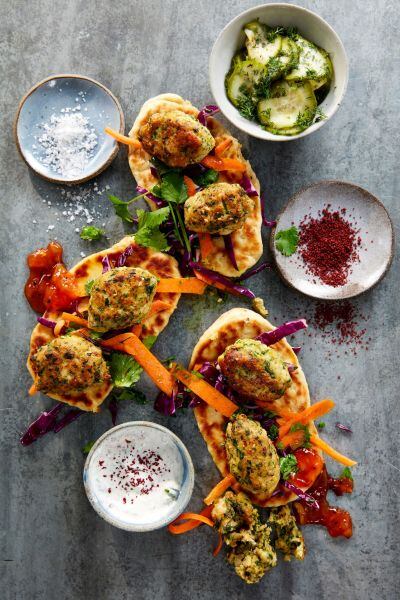
Serves 4
Cooking time: 30 minutes
Preparation time: 30 minutes
Ingredients
4 x 130g Norwegian cod fillets, skin off, cut into chunks
1 medium egg, beaten
2 garlic cloves, finely chopped
2 cm piece of fresh ginger, finely grated
a good handful each of dill, coriander & parsley leaves, roughly chopped
50g fresh breadcrumbs
1 tsp ground cumin
1 tsp ground turmeric
2 tsp ground coriander
¼ tsp chilli powder or chilli flakes
grated rind of 1 lemon
salt & pepper
vegetable oil for frying
For the sumac yoghurt
4 tbsp 0% fat Greek yoghurt
½ tsp Sumac powder
To serve
4 pittas
pickled cucumber
crunchy vegetables (carrot, red onion, red cabbage) or salad
1 tsp mango chutney
For the pickled cucumber
1 large cucumber, ends trimmed and cut into chunks or slices
¼ tsp sea salt flakes
1 tbsp white wine vinegar
1 tbsp caster sugar
¼ tsp freshly ground black pepper
1 tsp coriander seeds, crushed
a small handful of dill leaves
Method
• Using a food processor roughly chop the fish then add all the other ingredients and pulse to combine, do not over-process the mixture. Wet your hands in cold water and make 12 to 14 equal size balls, adding a few more breadcrumbs if the mixture is too wet, then put in the fridge on a large plate for 15 minutes to firm up
• Make the sumac yoghurt by mixing all the ingredients together and serve in a bowl with extra sumac sprinkled over to decorate
• Toss the cucumber with the salt in a colander and leave for 15 minutes over a bowl. With clean hands, squeeze out any excess water with and pat dry with a clean tea towel. Mix the rest of the ingredients together in a bowl, stir in the cucumber and leave to one side
• Heat 2 tbsp of vegetable oil in a frying pan. Fry the koftas over a medium to high heat for 2 minutes on each side until golden brown and cooked through
• Serve the koftas with the sumac yoghurt, pittas, pickled cucumber, crunchy vegetables or salad and mango chutney
Norwegian Seafood Council (NSC), which works with the fisheries and aquacultures of Norway, says there continues to be a growing trend for sustainable food choices, combined with information about origin and sourcing.
NSC UK director Hans Frode Kielland Asmyhr explains: “The debate about healthy, sustainable diets is moving from a focus purely on plant-based protein, to including responsibly sourced meat options. However, seafood’s role in the sustainable food debate and how it can address pressure on the food system, the environment and health, is often overlooked.
“The seafood industry could do more to help consumers to understand more about the food they are eating out of home. We work with pub chefs to provide insight into the importance of the origin of the ingredients they serve, and we aim to inspire them with delicious, versatile recipes.”
Pub operators that serve food are likely to have fish and chips as one of their mainstay dishes and a study by Seafood from Norway, found almost nine out of 10 diners (87%) agreed sustainable fish is important to them but only a quarter (24%) said they knew what to look for when it came to choosing sustainable fish out of home. Additionally, 74% of respondents agreed they would find it helpful for operators to tell them more about the sustainability credentials of their dishes.
Popularity of chips remains
Perhaps not so much of an upcoming trend but an ever-popular option, chips are the best-selling item at pubs, according to foodservice stalwart Bidfood.
“Chunky, crispy and salty, the side dish makes up for 30% of items sold on a pub menu,” says Holly Rogers, senior research and insights executive at Bidfood. “They almost always feature alongside pub classics such as burgers, pies and fish and chips.”
And, of course, they come in a variety of ways including triple-cooked, skin-on and loaded, which could be a real boost when offering customers their favourite style.
Meanwhile, US-based frozen potato business Lamb Weston is backing the trend of customers wanting provenance of ingredients.
The company that makes The Dukes of Chippingdom chips says, even before the pandemic, sourcing local food was important. “Provenance has become even more important since the covid crisis – people want to know where their food is coming from and supporting British growers has never been so strong. We’re expecting this will continue,” says Peter Evans, Lamb Weston’s UK marketing manager.
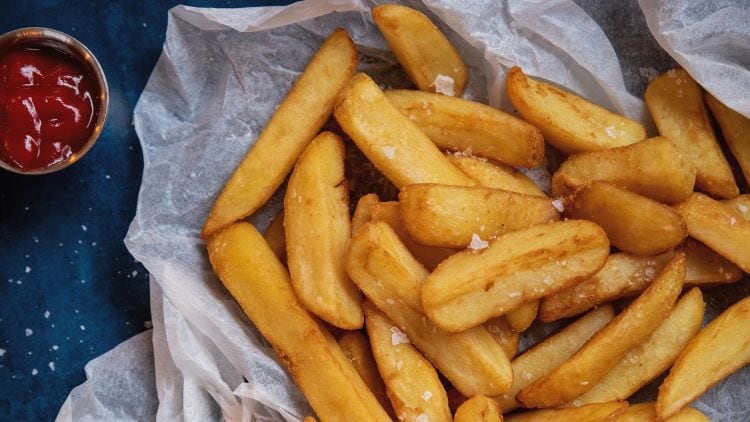
Meanwhile, Bidfood recommends taking your customers on an ethnic cuisine journey because its research suggests six in 10 people now like going to venues that offer new, interesting cuisines and niche food types.
“Fusion food is a good angle to take,” according to Rogers. “Take Burmese cuisine, for example, which draws on Chinese, Indian and Thai influences. One in four people said they’d be willing to try this cuisine in a pub so adapting your recipes to introduce these new and interesting flavours will be a good starting point for the less experimental eater.”
Meanwhile, plant-based alternatives continue to grow with 39% of consumers identifying as flexitarian (32%), vegetarian (6%) and vegan (1%). If Bidfood’s statistics ring true about people caring where ingredients are sourced from and are even willing to pay more for meals featuring sustainable ingredients, surely this is an opportunity for pubs to update menus to factor in consumers’ needs and increase revenue?
The foodservice company also believes desserts are a category that command a big price yet there is a “rapid decline of new product development” for them. Therefore, offering a sweet deal to entice customers to not stop munching after their mains could equal an increased bottom line for operators.
Another area it cites as a key growth area is the rise in afternoon tea. As day visits to pubs rise, there’s scope to build revenue by developing and marketing hot drink day occasions and also a calendar date for the Queen’s Platinum Jubilee to create themed cakes and desserts.
Over a third (35%) of consumers are calling for themed nights and this increases to 42% when just looking at those aged 18 to 24. It’s a playful incentive and if pubs pair that with meal deals to bring in revenue.
While pubs while suffering in lockdowns, the chink of light was in delivering meals to customers at home. This is a trend that continues to this day with Bidfood seeing the disruptor rising 422% since 2019. “Pub operators need to ensure that they continue to offer takeaways, where possible, to maximise on this growing opportunity,” Rogers says. “One way to do that is through breakfast and lunch delivery. With hybrid working still being the approach some businesses across the country will take, pubs could take advantage of this option by delivering not just to homes, but offices too.”
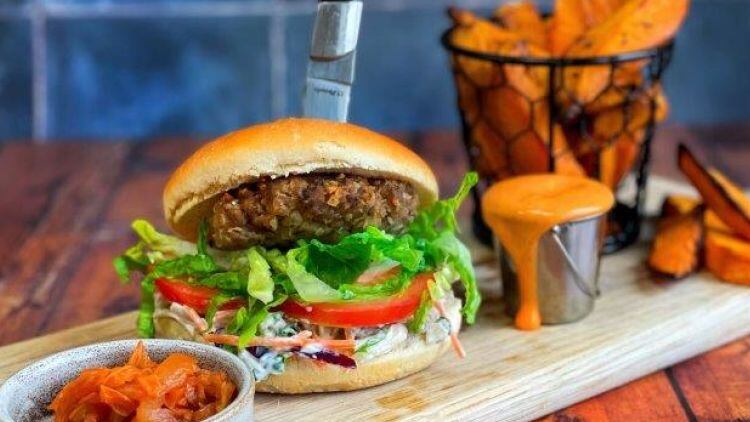
Meat your match
Meat products continue to make up the majority of menus despite much noise over the surge of veganism, according to Finder research titled How many vegetarians and vegans are in the UK from January 2022. It states: “Some 86% of the UK population are meat eaters, with 6% choosing a vegetarian diet, 5% opting for a pescatarian diet and 3% following a vegan diet.”
Andrea Deutschmanek, brand and marketing director for sausage producer The Sausage Man, says: “Meat, and especially sausages, are a very stable category and it’s evident that consumer desire for quality has been growing over the past few years.”
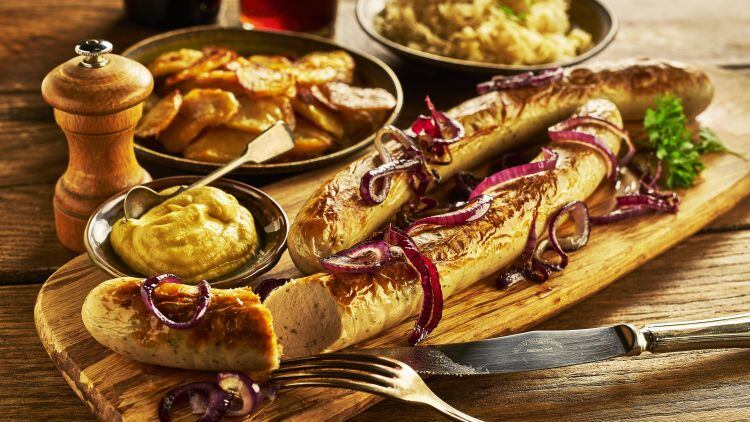
The business adds delivery and takeaway have provided a valuable boost to hospitality sectors during Covid-19 and never has it been more important for operators to adopt a multi-channel approach to extend their reach.
Deutschmanek adds: “General meat consumption is not set to decline and is predicted to stay steady with minor growth – despite the vegan and vegetarian trends. We’re more likely to see consumer consciousness regarding a balanced diet, resulting in the rise of flexitarianism, as well as a desire to eat higher quality meat-based products.
“In hospitality, we’ve seen the demand for the American hot dog treat grow. Many new hot dog brands have appeared across wide-ranging platforms, from dine-in establishments to a variety of food trucks and mobile or even pop-up concepts.”
Do what you do best
Summing up the attitude towards trends taken at the Cadeleigh Arms, Nick Hack says: “At this time of year, I often hear the word ‘trends’ being talked about. We could say Japanese cooking or this or that but we don’t believe in that. We just do what we want to do and the people come to us for that.
“We don’t look to ‘what's the next big thing?’ We’re not bothered. I mean, gins are overplayed, and all that kind of stuff. We don’t look toward these drinkie trends. We just get our wine suppliers in, sit down with them and try to work out what we think our customers would like and, more importantly, what goes with the food. We are a two-person team here so unfortunately we don’t have a brigade of chefs or front of-house staff.”




